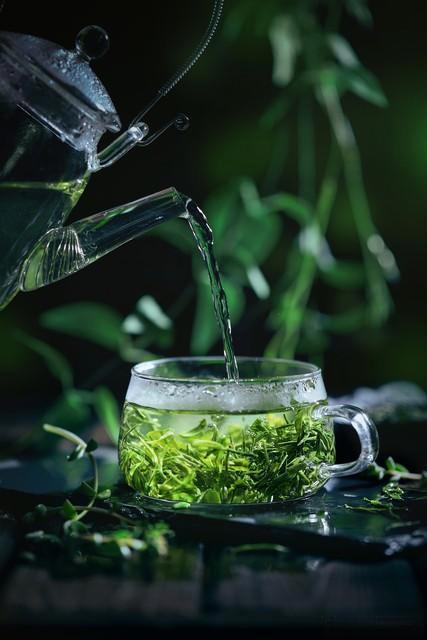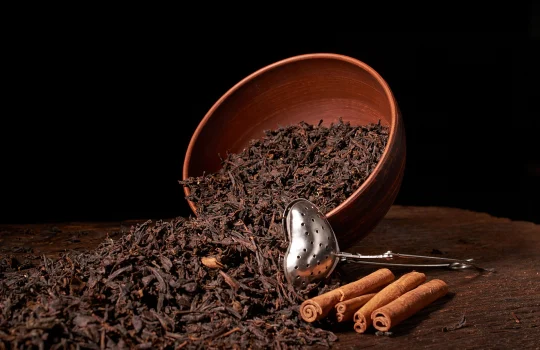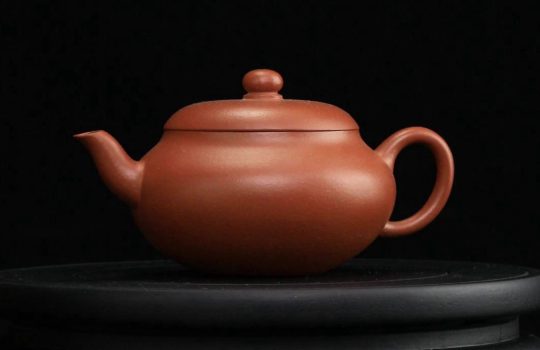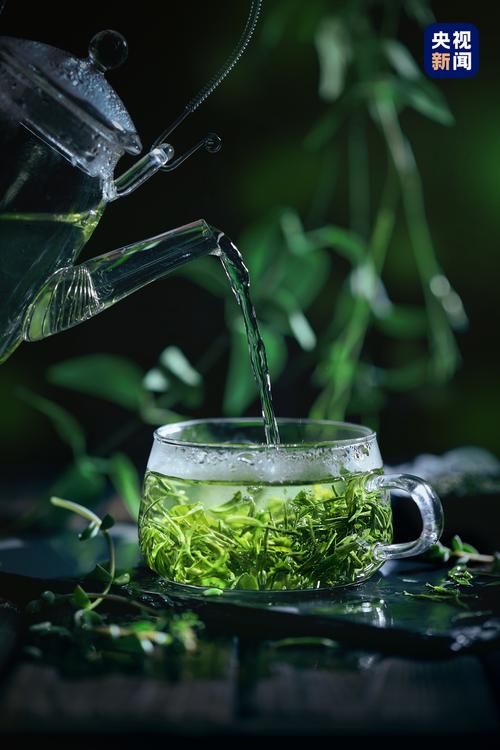1. Selecting tea based on tea type
Different tea types vary significantly in their effects and functions due to differences in their active chemical components and processing methods. China has a wide variety of tea types, and if personal circumstances permit, one can choose different tea types according to the season. Generally, it is recommended to drink flower tea in spring, green tea or white tea in summer, oolong tea in autumn, and black tea, yellow tea, or dark tea in winter. Of course, personal preferences should also be considered when selecting tea. In terms of quality, green tea, yellow tea, oolong tea, black tea, white tea, black tea, and flower tea each have their own unique characteristics in terms of colour, aroma, and taste. For example, some people prefer the refreshing taste of green tea, others prefer the rich flavour of black tea, while others prefer the mellow taste of black tea.
The amount of heat generated by drinking tea is closely related to the processing method of the tea. Oolong tea or black tea undergoes heating or roasting during production, which causes internal changes and produces heat-generating substances, making black tea hot and oolong tea warm. Green tea also undergoes roasting or drying, but its internal components remain largely unchanged. White tea is dried without absorbing heat, resulting in less heat in the tea broth, so green tea is considered cold and white tea is considered cool. Flower tea is made from green tea, but during the flower-scenting process, it undergoes physical and chemical moist heat treatment, making it a warm beverage. Additionally, you can choose tea based on your physical condition. For example, those with poor digestion can opt for black tea, oolong tea, or pu’er tea; those who are overweight or seeking to lose weight can choose oolong tea, pu’er tea, or flower tea; and green tea, which is rich in nutrients, is suitable for most people. Therefore, when drinking tea, one can choose based on seasonal changes, the quality and nature of the tea leaves, as well as personal physiological needs and lifestyle habits, to drink tea reasonably.
2. Choose tea based on skin type
The healthiest beverage for humans is tea, and the most classic beverage for women is flowers. Hence, the ancient saying, ‘The finest drink is tea, and the ultimate is flowers.’ Modern times also have the saying, ‘Men savour tea, and women drink flowers.’ Herbal teas are so popular among women not only for their natural fragrance but also for their神奇 beauty benefits. Many herbal teas can effectively inhibit and fade facial spots, delay skin ageing, and have skin-nourishing and beauty-enhancing effects. It can be said that herbal teas are specifically designed for women, with their vibrant colours and fragrant aromas, allowing women’s beauty to bloom in every cup. Here, we recommend different herbal teas based on different skin types, helping your skin reveal the delicate beauty of flowers through tea consumption.
(1) Dry skin. Dry skin lacks moisture, and if it becomes overly dry without proper hydration, it can age more quickly. Therefore, women with dry skin must pay attention to skin hydration and use moisturising cosmetics with good hydrating effects in their daily routine. They should also drink plenty of water to replenish bodily fluids. The following herbal teas are recommended for this skin type.
Osmanthus Tea: Osmanthus tea has detoxifying, skin-nourishing, skin-whitening, and endocrine-regulating effects. During the autumn and winter seasons when the air is dry and low in humidity, the skin also lacks moisture. Drinking osmanthus tea can help alleviate dry skin issues. Osmanthus tea can be enjoyed on its own or brewed with milk. The tea has a refreshing aroma and a fragrant, pleasant taste. Purple Flower Tea: Purple flower tea is rich in antioxidants such as vitamin C and vitamin E, which can effectively help eliminate free radicals in the body. It helps dry skin become smooth and radiant while also helping to delay skin ageing.
(2) Oily skin. People with oily skin have excessive sebum production and generally do not experience dryness. Even after washing their face, their skin becomes oily again shortly thereafter, and they often suffer from acne and blackheads. However, oily skin ages more slowly than other skin types. In daily life, it is important to control oil production and maintain hydration. Here, we recommend several herbal teas for women with oily skin.
Lemongrass Tea: Lemongrass tea helps regulate oil secretion, reducing the amount of oil produced. Additionally, you can wash your face with lemon juice mixed with water for a cleansing effect. Pregnant women should avoid this tea.
Bitter melon tea: Wash the bitter melon, slice it, dry it, and then steep it in hot water to make tea. Bitter melon tea has a bitter taste, so you can add a small amount of honey when drinking it. Bitter melon tea has the effects of clearing heat, cooling the blood, detoxifying, and dispersing abscesses, and it can help treat facial acne. However, those with a cold constitution should avoid drinking it long-term.
Plum Blossom Tea: Take 3–5 plum blossoms, place them in a cup, add an appropriate amount of boiling water, and steep for about 5 minutes. You can also add white sugar or mix with rose petals for a unique flavour. It helps improve acne and blackheads.
Honeysuckle Tea: Honeysuckle tea is typically brewed with green tea, chrysanthemum, and other herbs. It has the effects of clearing heat, detoxifying, dispersing wind-heat, and cooling the blood to stop diarrhoea. It can help improve facial acne issues.
(3) Sensitive Skin. Individuals with sensitive skin may experience unstable skin conditions due to seasonal changes, and their skin is easily affected by external factors such as cold winds, food, water quality, UV rays, fragrances, and pigments. Here are a few herbal teas recommended for this skin type.
Red Rose Tea: Red rose tea is the most popular herbal tea among women worldwide, not only for its beautiful appearance but also for its miraculous beauty-enhancing effects. Red rose primarily helps regulate qi and blood, soothe the liver and relieve depression, lower lipids and aid weight loss, and moisturise and nourish the skin. Its mild nature makes it very suitable for those with sensitive skin.
Magnolia Tea: Magnolia tea can be brewed with green tea. It has antibacterial, anti-inflammatory, swelling-reducing, pain-relieving, and blood-activating properties, which help improve sensitive skin. It can make the complexion rosy and radiant, with smooth and tender skin.
(4) Age-related skin. Some women have thin skin that easily develops wrinkles and loses elasticity, leading to premature aging of the skin. Therefore, women with this skin type must pay special attention to skin care, adopt comprehensive skincare routines, and choose skincare products with targeted efficacy, avoiding random use. The following herbal teas are recommended for this skin type.
Jade Butterfly Tea: Jade Butterfly Tea can whiten the skin, lower blood pressure, aid weight loss, promote metabolism, delay cellular ageing, and enhance immune function. It is suitable for skin ageing caused by various factors. Jade Butterfly Tea is made by brewing Jade Butterfly seeds and is best enjoyed with Sanqi flowers, ginseng flowers, and osmanthus flowers. To brew, use 1 teaspoon of leaves, pour 1 cup of boiling water over them, steep for about 10 minutes, and add a little brown sugar or honey to taste.
Red Qiaomei Tea: Red Qiaomei, also known as ‘Empress Red,’ is rare and highly prized. It has properties that reduce inflammation, detoxify, and nourish the skin, as well as delay aging. It is particularly effective in treating conditions such as freckles, age spots, and acne caused by hormonal imbalances.
3. Choose tea based on your constitution
Traditional Chinese medicine distinguishes between dry-heat and cold-deficiency constitutions. Tea leaves, depending on their processing methods, can be classified as cool or warm in nature. Therefore, tea consumption should be tailored to one’s constitution to maximise the benefits of tea therapy. Generally, green tea and oolong tea, such as Tieguanyin, which undergo minimal fermentation, are considered cool-natured teas; oolong tea and black tea are neutral; and Pu’er tea is warm-natured.
(1) Cold constitution. Individuals with a cold constitution typically exhibit symptoms such as frequent feelings of mental weakness and fatigue, pale complexion, pale lips, a pale red tongue, aversion to cold and wind, preference for hot beverages and foods, pale urine, delayed menstruation with excessive blood clots, cold hands and feet, joint pain, and weakened resistance to illness. For those with a cold constitution, it is advisable to choose teas with warming properties that help dispel cold and warm the stomach, such as Angelica tea, Astragalus tea, Hawthorn tea, Ginger tea, Longan tea, Almond tea, Black tea, and Oolong tea. It is not advisable to drink teas with cold properties, such as Ku Ding tea, Summer枯草 tea, and Green tea.
(2) Hot constitution. Individuals with a hot constitution have overly active metabolic processes, often manifesting as a preference for cold foods or beverages, dry mouth and throat, tendency to ‘catch fire’ (experience internal heat), flushed complexion, irritability and restlessness, frequent body heat yet aversion to heat, constipation or dry stools, and scant, yellowish urine. Therefore, individuals with a hot constitution are suitable for drinking cool or cold green tea or Tieguanyin tea; they can also drink herbal teas with heat-clearing and fire-purging properties, such as ginseng tea, cassia seed tea, bitter tea, chrysanthemum tea, peppermint tea, and honeysuckle tea, but should avoid drinking hot teas. (3) Deficient constitution. Individuals with a deficient constitution often exhibit pale or sallow complexions, listlessness, fatigue, palpitations, shortness of breath, aversion to cold, cold limbs, night sweats, dry mouth and throat, weak voice, slow recovery from illness, thin tongue coating, and weak pulse. The deficient constitution is further divided into four types: qi deficiency, blood deficiency, yin deficiency, and yang deficiency.
Qi deficiency: The main manifestations of qi deficiency include low energy, lack of speech, general fatigue, a low voice, shortness of breath upon exertion, easy sweating, dizziness, palpitations, sallow complexion, poor appetite, night sweats, and a weak pulse. Individuals with qi deficiency can choose teas with qi-tonifying effects, such as ginseng tea, astragalus tea, or codonopsis tea, and generally should avoid drinking cool-natured teas. Blood deficiency: The main manifestations of blood deficiency include a sallow and pale complexion, dizziness and fatigue, blurred vision and palpitations, insomnia and vivid dreams, dry stools, scanty and pale menstrual flow in women, a pale tongue with a slippery coating and little saliva, and a fine and weak pulse. It is advisable to choose tea therapies with blood-nourishing, blood-tonifying, and blood-generating effects, such as Angelica sinensis tea, donkey hide gelatin tea, and mulberry tea.




